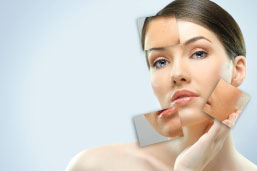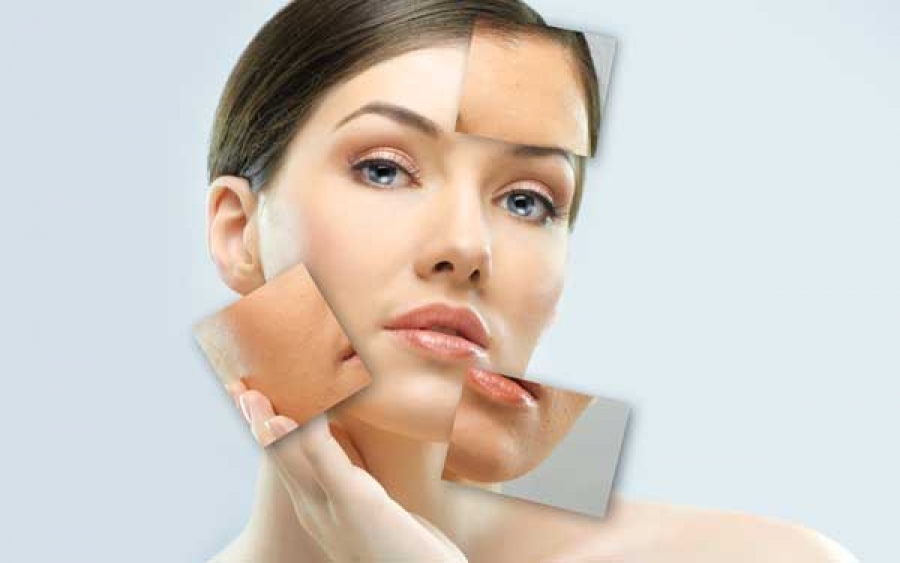 None of this reflects well for the image of the skin therapy profession. In addition, the lack of credible procedures and diagnostic tools being used in conjunction with outdated knowledge is a reflection of our base knowledge, which in all truth is far higher than perceived by the public.
None of this reflects well for the image of the skin therapy profession. In addition, the lack of credible procedures and diagnostic tools being used in conjunction with outdated knowledge is a reflection of our base knowledge, which in all truth is far higher than perceived by the public.
For example: If you still think dehydration is a skin condition, you are not likely to have considered how oil and water work in synergy, the physics of transepidermal water loss, and how the relevant ambient humidity affects water evaporation. You need to re-educate!
Today, we should be far more aware of how the leading causes of skin conditions will affect the cells and systems of skin. Today's clients are more informed and want information and knowledge from you that they will not be reading in the weekly women's magazines or on the Internet. The client should see you as an expert in "skin" and one that has an extensive understanding of skin structure and function.
However, many skin treatment practitioners may apply the approach of treating the symptoms and not the cause of skin conditions, and this may be why many treatment protocols fail to deliver the kind of results clients expect and deserve. By determining the cause of the condition(s) and what subsystems of the skin have been affected, more appropriate and effective plans of action can be formulated.
One of the reasons I believe we are losing our place in the "skin" industry is because of a reluctance to take on new analysis methods and diagnostic technology. Even with a detailed examination and consultation, how can we be sure that everything we see or hear is exactly what is actually happening within the skin? How dry is dry and how oily is oily? We can not assess this by looking or guessing and this is where skin diagnostic tools become absolutely imperative as part of a skin treatment clinic and diagnostic service. Over the years, I have observed clinics spending tens of thousands of dollars on a modality to treat the skin without one diagnostic tool being used to ascertain if that modality was even suitable to use on some skins. The term "suitable for all skin types" should be approached with caution. There are always risk factors to be considered.
Intense Pulsed Light (IPL) is a prime example; there are many of these devices being used without any diagnostic equipment to determine skin color or skin risk for hyper- or hypo-pigmentation side effects.
A diagnostic tool that would help determine this costs less than $1,500 which is not a lot to pay to ensure your clients skin health. Many insurance claims for treatments gone wrong could have been easily avoided by the use of these relatively inexpensive devices.
Almost 20 years ago, I began teaching a progressive method of skin analysis. This method was the first non-product aligned, intensive-program covering the major relevant aspects of effective, contemporary analysis and consultation. In addition to a complete update of the relevant anatomy and physiology of the skin, it brought new competencies and skills including:
- How to link skin structure and function to skin conditions;
- How to quickly determine leading causes and to link that cause to skin structure and function;
- Understand the "cascade" effect that is a result of related conditions;
- Determine triggers and contributing factors of the conditions; and
- How to prioritize treatment order for maximum results.
This approach to professional skin analysis is now the norm in professional clinics in many parts of the world, but even at the beginning, when I began teaching this method I realized some form of skin measurement tools were needed. Key points of reference needed to be established for the most important parameters or aspects of the skin. These parameters cannot be guessed; they must be measured to be credible and useful. There are four aspects of the skin that we should be measuring during a detailed analysis.
Hydration
By monitoring the percentage of free water in the epidermis, one is able to ascertain a number of key "skin health" indicators, including the condition of the first three lines of skin barrier defense, the enzymatic action of the epidermis and the levels of fluid intake and dispersion of fluid intake.
Skin Lipid levels
Testing sebum or skin lipids will determine the amount of sebum being excreted to the skin surface and the state of the acid mantle. As the acid mantle is the first line of skin barrier defense, the quality of the surface fluid balance is a useful diagnostic tool when diagnosing skin disorders like eczema and allergic contact dermatitis, rosacea type conditions and essential fatty acid deficiency. In these cases, the health of the acid mantle should be measured as a point of reference. Without this point of reference there is no starting point and therefore no credible scientific way of proving skin health progress.
Melanin
Increasingly important is a measurement of the melanin content of the skin. Today, with so many mixed ethnicities the risk factors and protocols for many treatments involving heat, abrasion or chemicals need to be determined before choosing a modality. By measuring the melanin content over various sites of the body, we cannot only determine what the base phototype is, but accurately asses the rate of melanogenesis and minimal erythemic dose (MED) or burn time.
Erythema
The measuring of erythema (or the density of the vascular mat) provides information that will indicate the predisposition to permanent diffused redness and flushing. It also tells us about the density of the supporting connective tissue of the dermis and the level of damage in older skins. Measuring vascularity provides more accurate data than subjective opinion and a more precise condition change can be determined – when referenced measurements are compared over time.
Once you have conducted a professional skin analysis, there should be a wealth of valuable information at your fingertips that will help you determine exactly what has gone wrong and what treatment solutions are required.
A detailed skin analysis will determine the following:
- Genetic history;
- Nutrition and lifestyle;
- Cosmetic and medical history;
- Client skin type;
- Intrinsic characteristics (born with a genetic predisposition);
- Extrinsic characteristics (developed through clients
work/play lifestyle); - Treatment risk factors and client protocols for home care.
The consultation will also provide you with information about:
- The primary cause of conditions;
- The secondary effect on cells and systems;
- Priority skin conditions and secondary
skin conditions.
These discoveries will lead you to:
- Identifying the first priority skin condition for
clinical intervention; - Second priority skin condition for client home care;
- What treatment modalities to use and in what order.
Only with this knowledge can you prepare a credible summary report on a client's skin conditions and prescribe effective treatment plans. As mentioned, the fundamentals of determining cause and identifying affected cells and systems are the cornerstones of treatment success. Without this information, it can be a "hit or miss" approach to prescribing an effective treatment plan. Many skin conditions require a multiple treatment modality approach … but, which one should be used first? What order and frequency will be required? Most often, when the cause of the skin condition is addressed first, the levels of improvement of subsequent treatment steps are accelerated; delivering faster and better results. It is this type of knowledge and approach to skin treatment therapy that will elevate the industry in both the eyes of the public and the medical profession to enable us to "bridge the gap" between aesthetics and dermatology. Professional credibility and earning potential can only follow. This is why I can not impress enough that the best investment you can make in your future is education.
 Internationally acclaimed dermal science educator, Florence Barrett-Hill is a practitioner, researcher and author with a vast experience covering all aspects of professional aesthetic therapy and paramedical skin care. Barrett-Hill is one of the worlds most recognized and respected clinical aesthetician/practitioner whose influence and passion for promoting education has changed the face of the industry in Australasia and other parts of the world over the past 15 years. She is a sought after presenter of technical matters pertaining to skin treatment therapy, and travels internationally sharing her knowledge with individuals and groups who believe the future of professional skin care lies with a scientific foundation. Barrett-Hill's most renowned book, "Advanced Skin Analysis", has been a best seller since 2004 and has been translated into German, French and Japanese. She currently has four books available globally, including her most recent Cosmetic Chemistry and Pictorial guides. www.pastiche-usa.com or www.virtualbeauty.co.nz
Internationally acclaimed dermal science educator, Florence Barrett-Hill is a practitioner, researcher and author with a vast experience covering all aspects of professional aesthetic therapy and paramedical skin care. Barrett-Hill is one of the worlds most recognized and respected clinical aesthetician/practitioner whose influence and passion for promoting education has changed the face of the industry in Australasia and other parts of the world over the past 15 years. She is a sought after presenter of technical matters pertaining to skin treatment therapy, and travels internationally sharing her knowledge with individuals and groups who believe the future of professional skin care lies with a scientific foundation. Barrett-Hill's most renowned book, "Advanced Skin Analysis", has been a best seller since 2004 and has been translated into German, French and Japanese. She currently has four books available globally, including her most recent Cosmetic Chemistry and Pictorial guides. www.pastiche-usa.com or www.virtualbeauty.co.nz
